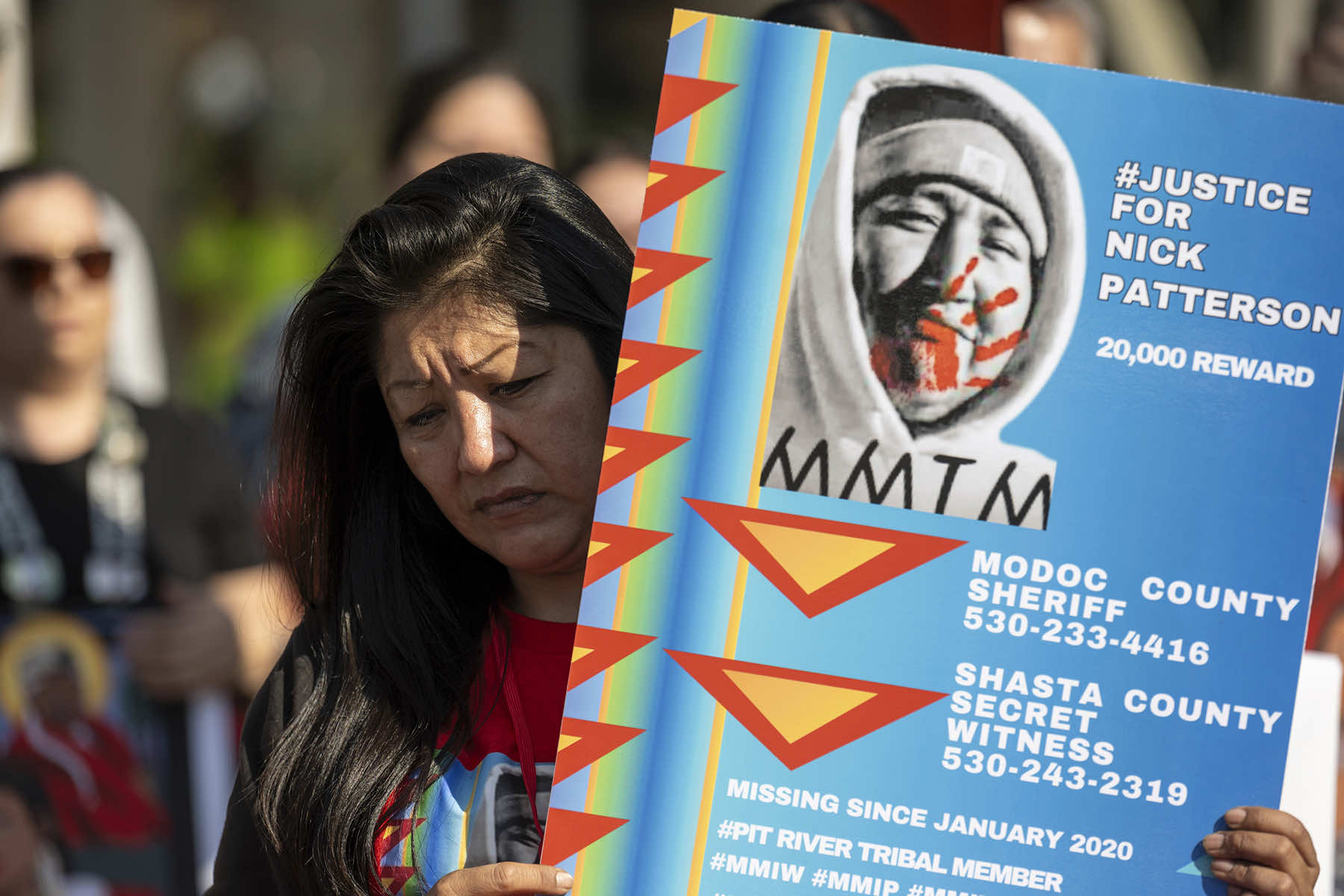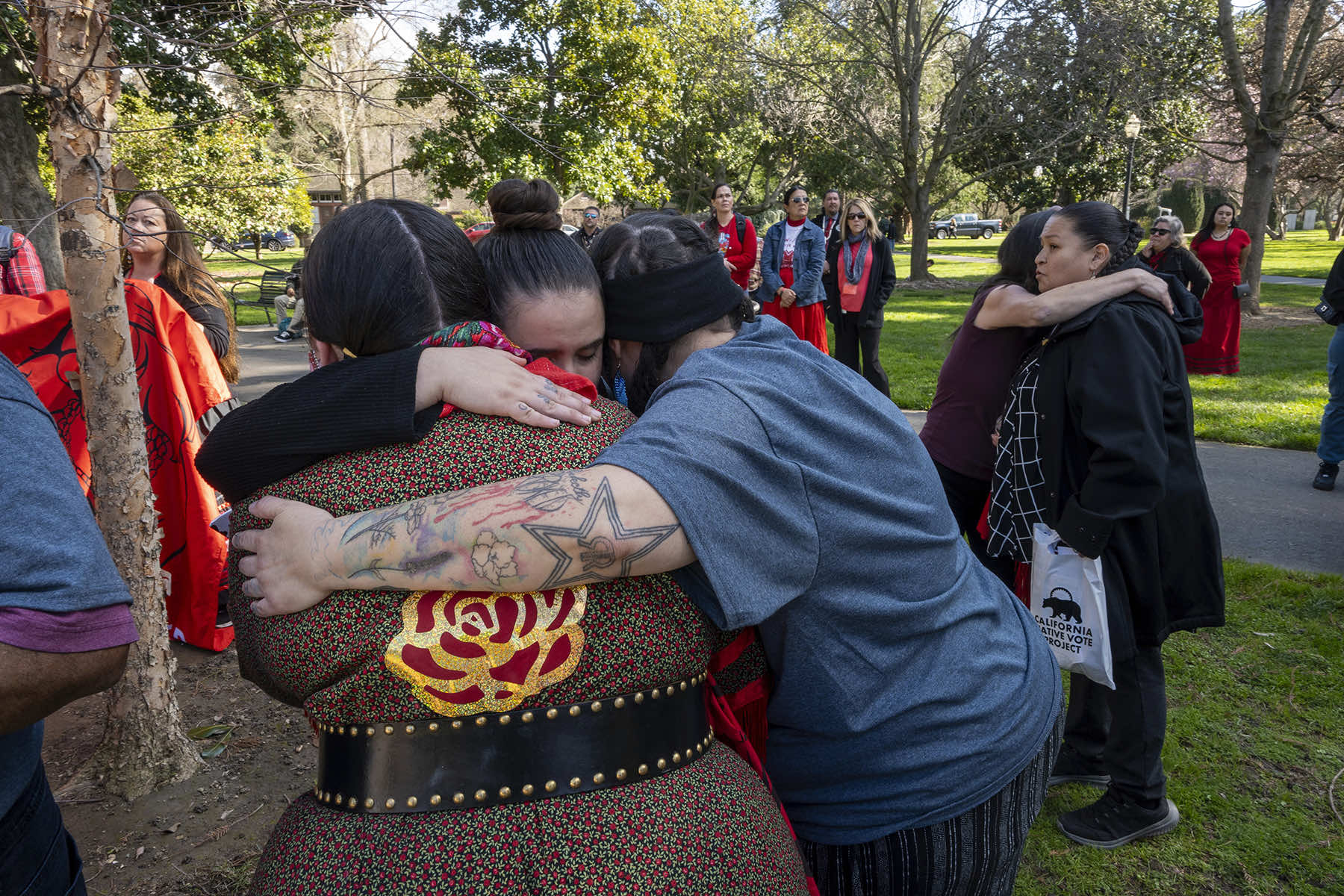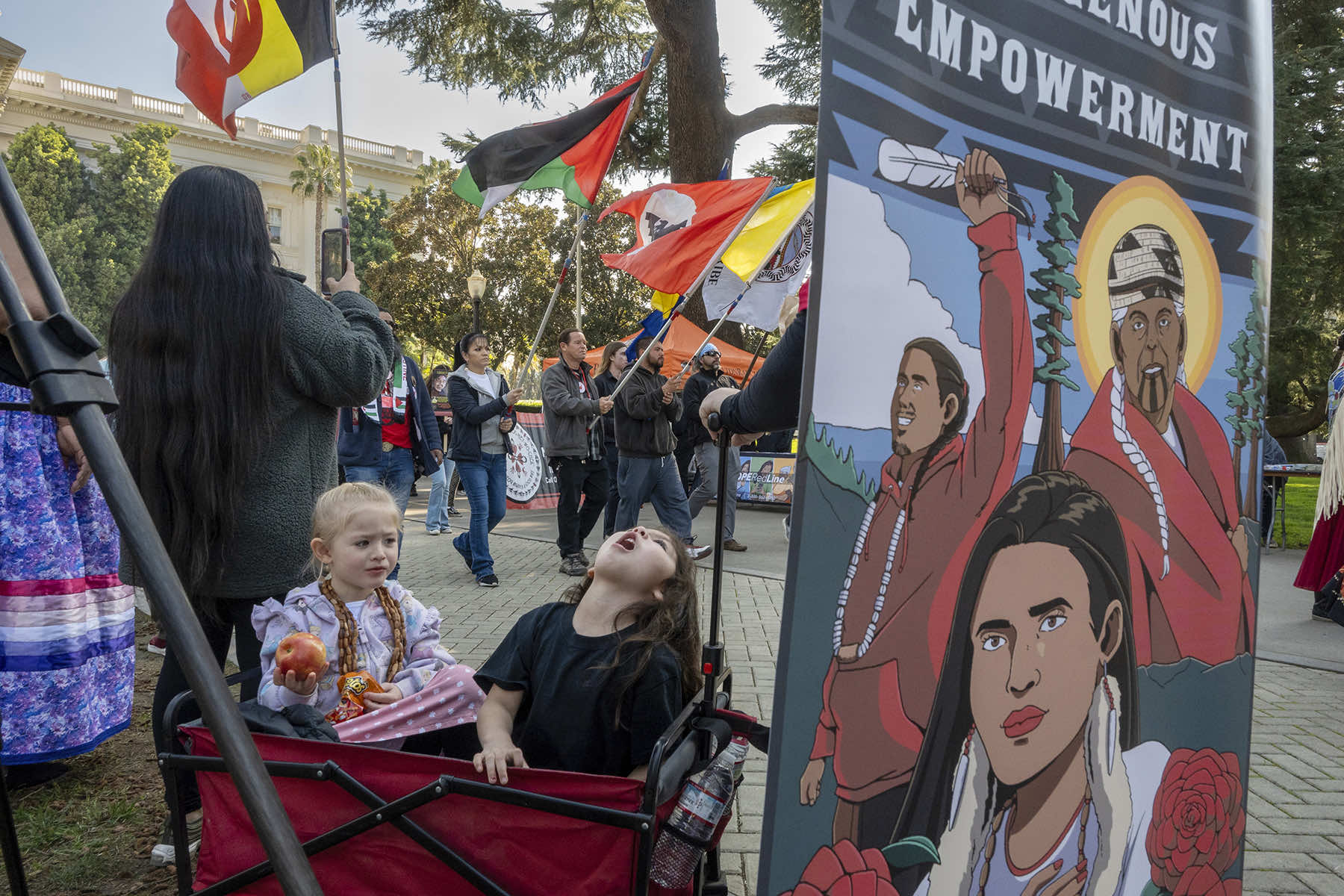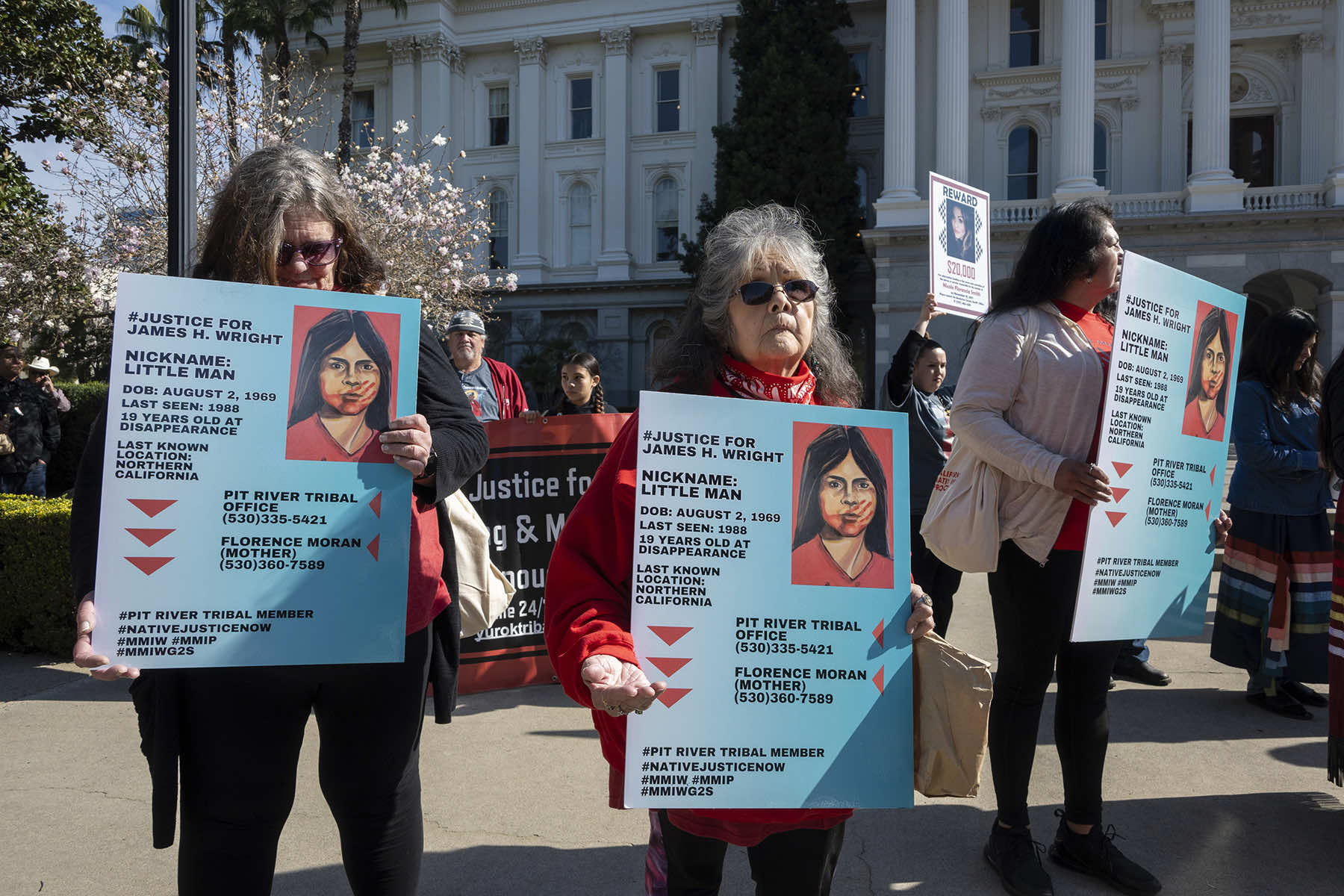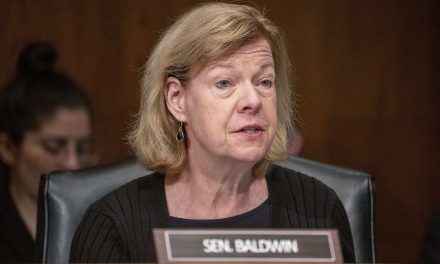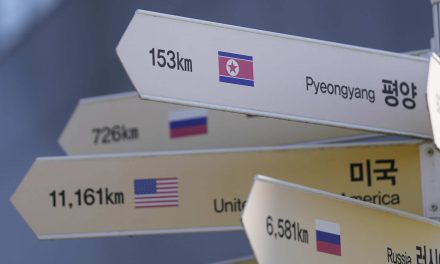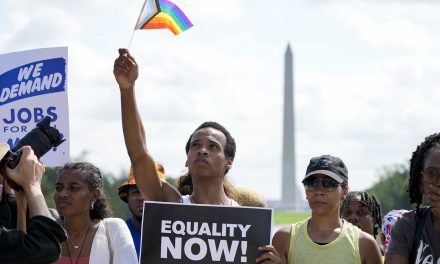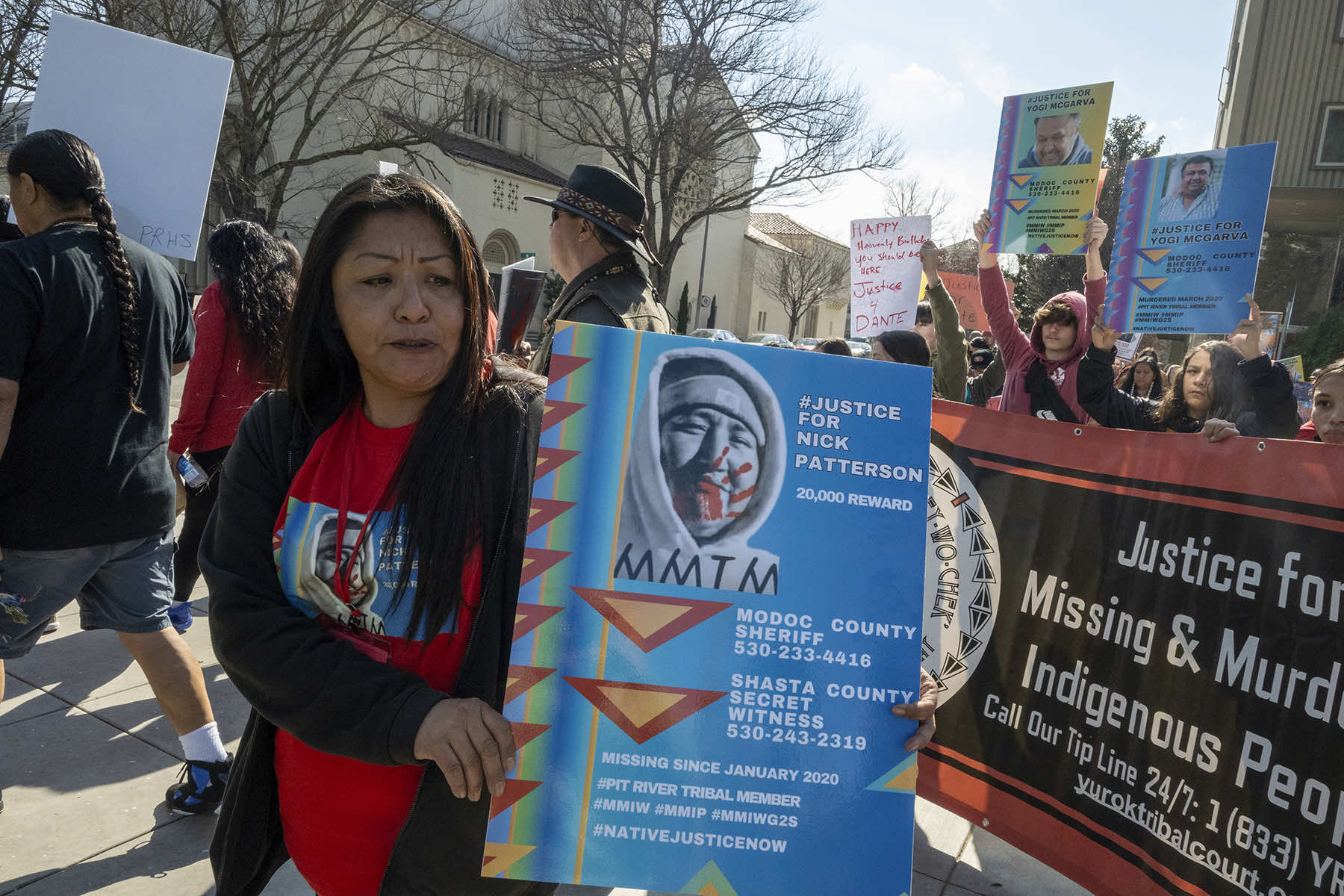
It was the winter of 2021 when Philbert Shorty’s family found his abandoned car stuck in the mud outside the small community of Tsaile near the Arizona-New Mexico state line. “We knew something happened from the get-go,” said his uncle, Ben Shorty. “We couldn’t find any answers.”
Family members reported the 44-year-old man missing. And for the next two years, they searched — hiking through remote canyons on the Navajo Nation, placing advertisements on the radio and posting across social media in hopes of unearthing any clues.
The efforts produced nothing. They had no way of knowing he had been killed more than a week before they reported him missing.
They remained unaware even as U.S. prosecutors finalized a plea deal last summer with Shiloh Aaron Oldrock, who was charged in connection with Shorty’s death as a result of a separate investigation into the killing and beheading of Oldrock’s uncle.
The 30-year-old Fargo, North Dakota, man told authorities his uncle had threatened to kill him during an alcohol-fueled fight that came eight months after the pair conspired to cover up Shorty’s death by dismembering and burning his body on January 29, 2021.
In both cases, Oldrock told investigators, a night of heavy drinking and fighting ended in death at his uncle’s home near Navajo, New Mexico.
The details of this tale are more gruesome than most. Yet to those living in Indian Country, the elements underlying the tragedy are all too familiar. Generations of unaddressed trauma combine with substance abuse to create a dangerous recipe that often ends in violence, and law enforcement resources and social support programs are too sparse to offer much help.
DEATHS AND DISAPPEARANCES ARE GETTING NOTICED. WILL IT HELP?
Shorty’s story is one of many across the United States and Canada, where high rates of missing persons and unsolved killings involving Indigenous people have captured the attention of policymakers at the highest levels.
In 2019, former President Donald Trump signed an executive order establishing a task force. Congress followed in 2020 by passing two key pieces of legislation aimed at addressing the crisis. U.S. Interior Secretary Deb Haaland, who had championed legislation as a congresswoman, has been working under the Biden administration to solve some of the systemic problems and jurisdictional challenges that have left victims’ families feeling invisible.
The Interior Department is nearly three weeks passed a deadline for responding to a set of recommendations from a special commission that spent months traveling the country, speaking with family members, advocates and police officials about how best to tackle the epidemic.
Commission members heard hours of heartbreaking testimony from family members who have fought to keep their cases in the spotlight, often memorializing those lost with prayer vigils, special blankets and buttons, traditional ribbon skirts, and red handprints painted on sidewalks and buildings.
Like others, Shorty’s family now knows the suffering will linger despite the increased emphasis on solving such crimes.
Shorty’s family “had been left in the dark about what happened,” U.S. Attorney for the District of New Mexico Alexander Uballez acknowledged in a November sentencing memo that referred to Shorty by only his initials — PS. Wrote Uballez: “They are just beginning to grieve as they were only informed recently that PS was deceased, rather than missing.”
Uballez expressed hope that putting Oldrock behind bars would bring some closure, saying that Shorty’s elderly aunt could stop looking down the driveway in hopes her nephew might one day return.
Uballez said Oldrock’s convictions were part of the U.S. Justice Department’s duty to bring answers to tribal communities. While no amount of investigation or prosecution will bring back a loved one, he said, law enforcement partners will meet each case “with urgency, transparency and coordination.”
PROMISES THAT MAY OR MAY NOT LEAD SOMEWHERE
That vow of transparency is what has Native American families frustrated. Many say authorities regularly fail to communicate about the status of pending cases. In Shorty’s case, unanswered questions about whether there were any remains recovered have left his family guessing as to whether they can ever have a burial for him.
“The investigators never called me. They were supposed to but never did,” Ben Shorty said in a recent interview. “It was all done behind closed doors.”
The FBI’s most recent list of missing people from the Navajo Nation still included Philbert Shorty. That’s despite investigators having had reason to believe he was dead as early as October 2021 with Oldrock’s confession. A medical investigator’s report issued the following spring said that while it couldn’t be confirmed conclusively, communications with law enforcement suggested that charred remains found at the home of Oldrock’s uncle likely were those of Shorty.
Darlene Gomez, an Albuquerque attorney, has represented dozens of Native American families. The handling of Shorty’s case doesn’t surprise her.
“The FBI does this all the time,” she said. “They don’t even talk to the family until there is an indictment. And very often they don’t say anything at all.”
While there is a need to keep confidential certain details as investigations move forward, federal authorities did not immediately respond to questions by The Associated Press about the process for sharing information with families and whether people were assigned to serve as liaisons to help families as cases move through the system.
The federal Not Invisible Act Commission devoted part of its 212-page report to related concerns and recommendations. The report references stories shared by families about difficulties in accessing police and autopsy reports: “Families are often kept waiting, not knowing if the person identified is their family member or not knowing the cause and circumstances of death nor how the body of their family member was handled.”
It all rings true for Bernadine Beyale, the daughter of retired Navajo police officers who founded the non-profit 4 Corners K-9 Search and Rescue in Farmington, New Mexico, in 2022. Her group has conducted dozens of individual searches, and she has helped to build bridges between families and law enforcement to help families avoid feeling like their cases are falling through cracks.
“Even if (law enforcement) would just talk to the families, say, `We don’t have anything yet but we’re still working on it,’ it would help,” she said.
TRYING TO BE AS TRANSPARENT AS POSSIBLE
Records obtained by the AP show that a witness gave a ride to Oldrock in October 2021. He had cuts on his face and blood on his hands and clothes. He told the driver he had just killed his uncle, identified as Erwin Beach. He said he believed Beach had killed his grandmother a year earlier and was going to kill him, too.
Oldrock told the FBI he stabbed Beach repeatedly after Beach swung an axe at him during a drunken fight. Oldrock said the chain of violent events that October day began much the same way as when Shorty was killed months earlier — with heavy drinking. Oldrock was sentenced in November to 35 years in prison for second-degree murder in the killing of Beach and involuntary manslaughter in Shorty’s death.
Whether details are unveiled through court documents or they come from investigators in the field, Beyale acknowledges it can be difficult to decide how to share information with victims’ families.
“If we find a body or remains, I don’t give a lot of details,” she said. “But I try to be as transparent as possible and tell them we don’t have a positive ID but we found remains in this area.”
Beyale tries to persuade families who want to conduct their own search to let her do it instead. “I always ask them if they are not only physically ready to do a search like that, but also mentally ready to find something,” she said. “They always say, `Yeah, yeah.’ But they are not. I’ve not found one family that was mentally ready.”
Shorty’s family still hopes to have a funeral. They’re ready for closure but are — still — waiting on investigators.
“What are we supposed to bury? Just nothing? At least some ashes or something,” Ben Shorty said. “We got nothing still.”

